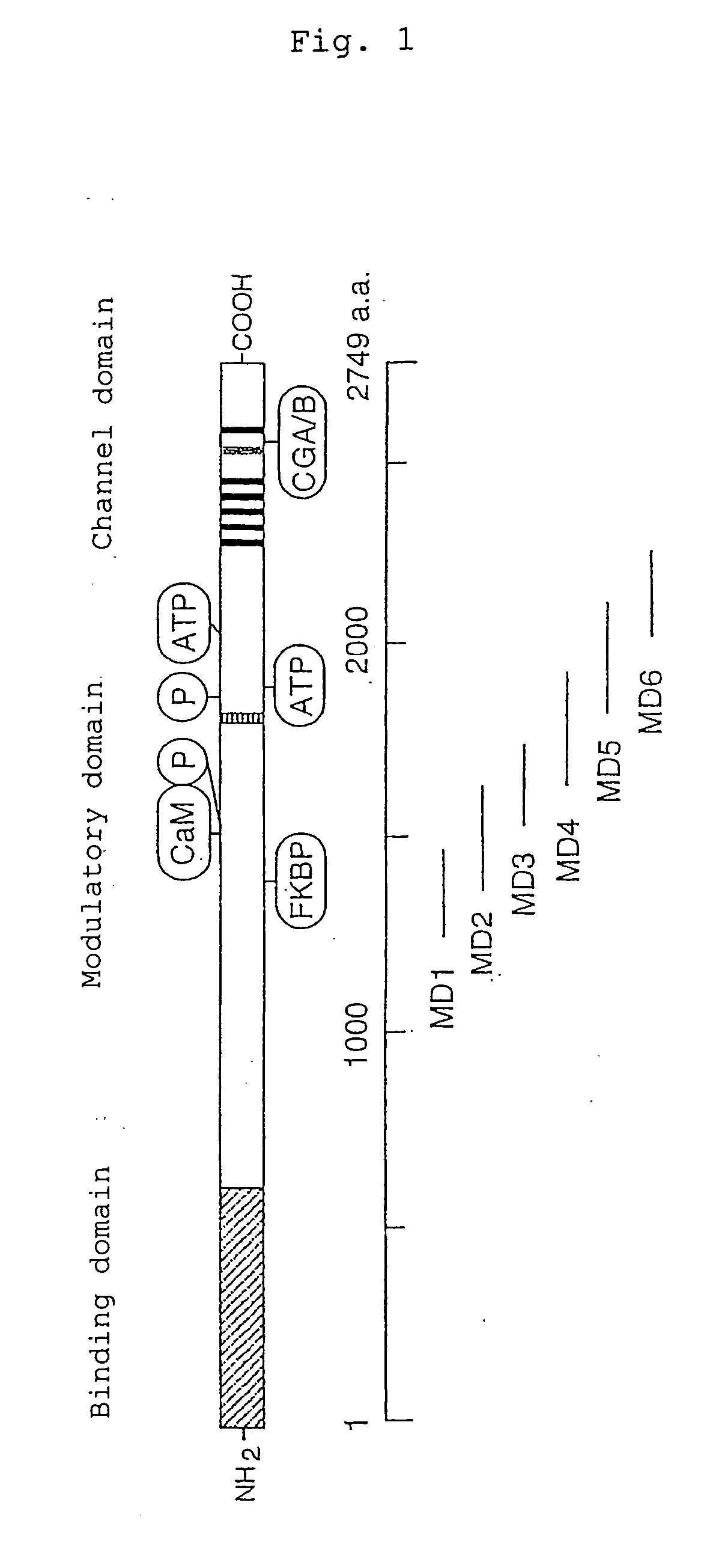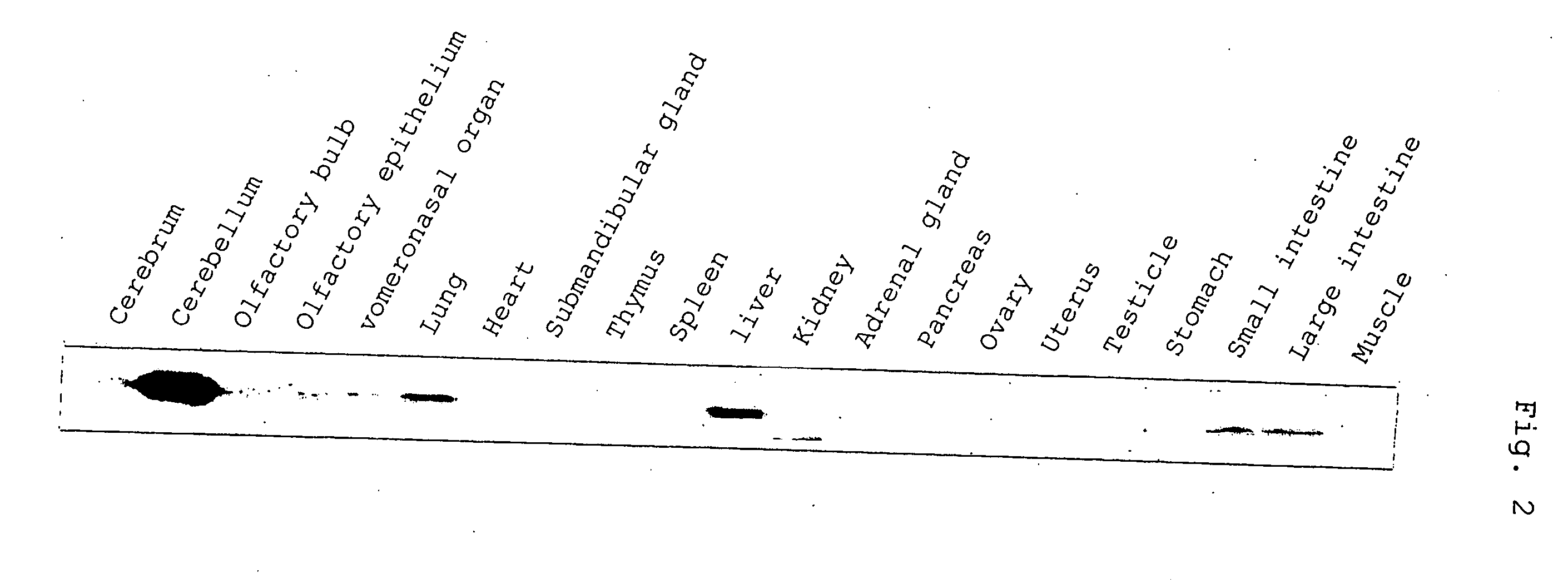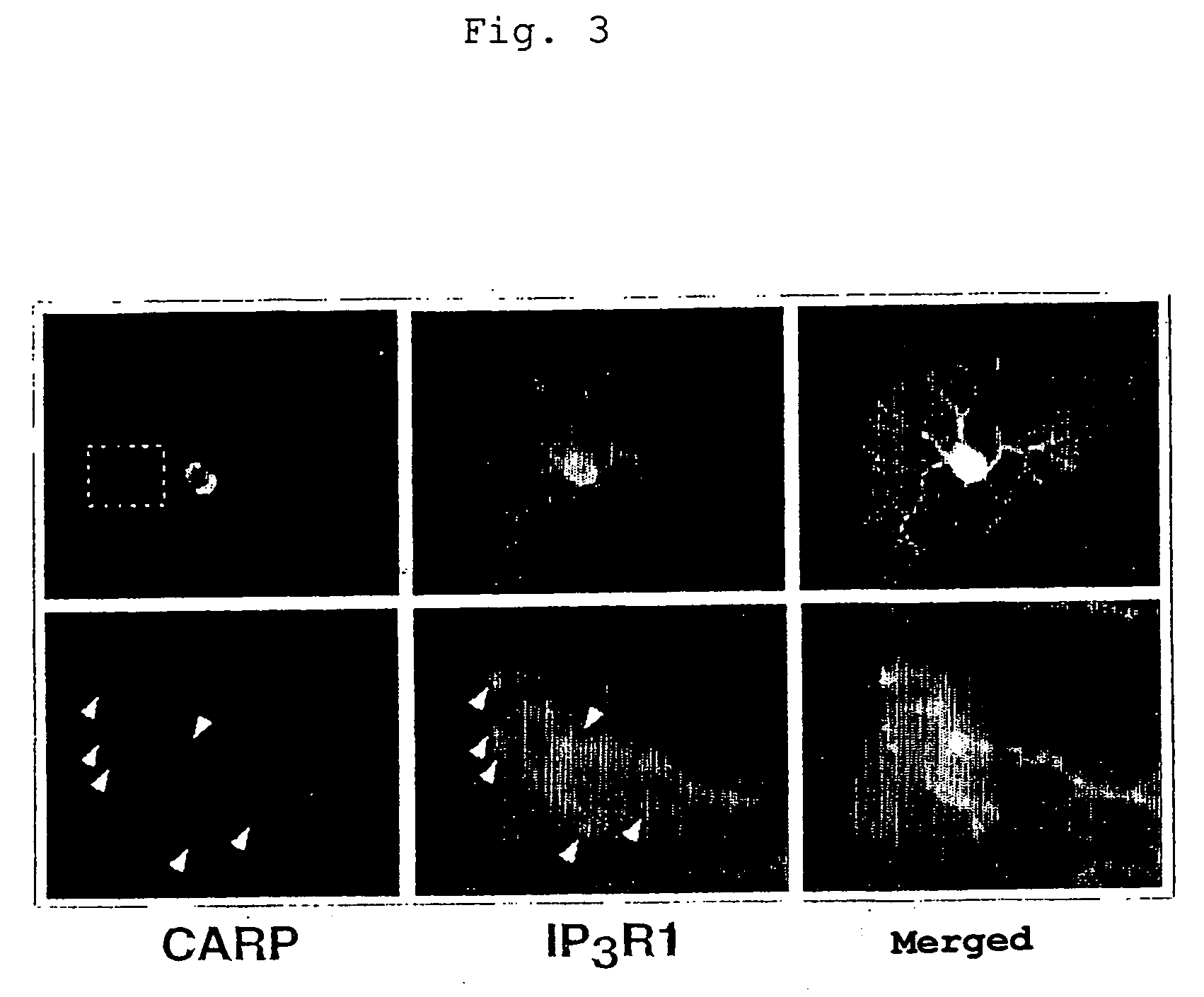Control of function of intracellular Ca ion
a technology of ca2 + release and function, which is applied in the direction of peptide/protein ingredients, peptide sources, metabolic disorders, etc., can solve the problems of not achieving comprehensive not achieving elucidation of the function of carp
- Summary
- Abstract
- Description
- Claims
- Application Information
AI Technical Summary
Problems solved by technology
Method used
Image
Examples
example 1
Design and Synthesis of the Bait Constructs
[0069] Using a part of the IP3R1 modulatory domain shown in FIG. 1 as bait, six kinds of baits were designed.
[0070] Amino acids 1245-2264 of mouse IP3R1 (mIP3R1) was divided into overlapping 6 constructs, and respective cDNA constructs corresponding to these 6 c constructs were used as baits. Amino acid resides 1245-2264 of the IP3R1 modulatory domain was mapped, and using primer sets as listed below each including a sense strand (S) and an antisense strand (A), six bait constructs (MD1 to MD6) were prepared by PCR.
MD1 (mIP3R1: 1245-1464 amino acids):(S) :5′-GGGAATTCGGTGGAGGTTGTGCAGGCAACCAGCAGAATC-3′(A) :5′-GGGGGTCGACGTGTTGTTACAGGCCCTGCAGA-3′MD2 (mIP3R1: 1387-1647 amino acids)(S) :5′-GGGAATTCGGTGGAGGCAAGAATGTGTACACGGAGA-3′(A) :5′-GGGGGTCGACCTCACATTTCCTCCTGGCATC-3′MD3 (mIP3R1: 1593-1785 amino acids)(S) :5′-GGGAATTCGGAGGAGGATCCAGAGACTACCGAAATATCAT-3′(A) :5′-GGGGGTCGACGCTTGTGGAACTAGATCCAGGACC-3′MD4 (mIP3R1: 1685-1943 amino acids)(S) :5′-GGG...
example 2
Construction of cDNA Library
[0072] Mouse brain cDNA library was constructed in pGAD-GL (Clontech Laboratories Inc.). In brief, total RNA from mouse brains (6-week old ddY mouse; Nippon SLC, Hamamatsu, JAPAN) was enriched for poly(A) +mRNA expression by using oligo(dT)-cellulose chromatography. Double-stranded cDNAs were generated using random hexamers as primers, and were ligated to EcoRI adapters. After digestion with EcoRI, cDNAs over 400 bp were collected by the size fractionation using Sepharose CL2B (Amersham Biosciences Inc., Piscataway, N.J., USA), and inserted into EcoRI site of pGAD GL. Approximately 5×105 independent clones were generated in Escherichia coli XL1-Blue MRF (Stratagene, La Jolla, Calif., USA), and plasmid DNA was isolated after one amplification.
example 3
Preparation of Antibodies
[0073] Monoclonal antibodies against mIP3R1, 4C11, 18A10 and KM1112 were prepared according to the method (Maeda, N., Niinobe, M., et al., (1988), J. Neurochem., 51,1724-1730; Maeda, N., Niinobe, M., et al, (1990), EMBO J., 9, 61-67: Sugiyama, T., Furuya, A., et al., (1994), FEBS Letters, 354, 149-154). A peptide corresponding to amino acid residues 267-279 (CDGILGDNFRPTQ) of mouse CARP which is diverse in carbonic anhydrase family was synthesized, and this peptide was conjugated to keyhole limpet hemocyanin (KLH) via N-terminal Cys residue, using m-maleimidobenzoyl N-hydroxysuccinimide ester (MBS). A polyclonal antibody was raised in rabbits (New England White, Hokudo Tohya Immunity Laboratory, Hokkaido, Japan). The antibody was purified from antisera using antigenic peptide-conjugated beads according to a standard protocol.
PUM
| Property | Measurement | Unit |
|---|---|---|
| time | aaaaa | aaaaa |
| time | aaaaa | aaaaa |
| time | aaaaa | aaaaa |
Abstract
Description
Claims
Application Information
 Login to View More
Login to View More - R&D
- Intellectual Property
- Life Sciences
- Materials
- Tech Scout
- Unparalleled Data Quality
- Higher Quality Content
- 60% Fewer Hallucinations
Browse by: Latest US Patents, China's latest patents, Technical Efficacy Thesaurus, Application Domain, Technology Topic, Popular Technical Reports.
© 2025 PatSnap. All rights reserved.Legal|Privacy policy|Modern Slavery Act Transparency Statement|Sitemap|About US| Contact US: help@patsnap.com



